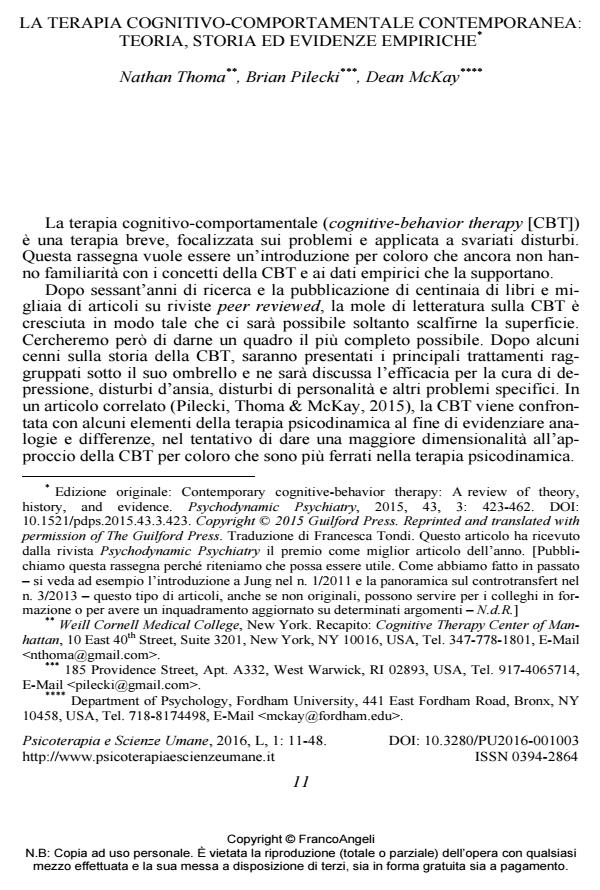La terapia cognitivo-comportamentale contemporanea: teoria, storia ed evidenze empiriche
Titolo Rivista PSICOTERAPIA E SCIENZE UMANE
Autori/Curatori Nathan Thoma, Brian Pilecki, Dean McKay
Anno di pubblicazione 2016 Fascicolo 2016/1
Lingua Italiano Numero pagine 38 P. 11-48 Dimensione file 159 KB
DOI 10.3280/PU2016-001003
Il DOI è il codice a barre della proprietà intellettuale: per saperne di più
clicca qui
Qui sotto puoi vedere in anteprima la prima pagina di questo articolo.
Se questo articolo ti interessa, lo puoi acquistare (e scaricare in formato pdf) seguendo le facili indicazioni per acquistare il download credit. Acquista Download Credits per scaricare questo Articolo in formato PDF

FrancoAngeli è membro della Publishers International Linking Association, Inc (PILA)associazione indipendente e non profit per facilitare (attraverso i servizi tecnologici implementati da CrossRef.org) l’accesso degli studiosi ai contenuti digitali nelle pubblicazioni professionali e scientifiche
La terapia cognitivo-comportamentale (cognitive-behavior therapy [CBT]) è molto diffusa. Vengono prese in rassegna le teorie, la storia e le evidenze empiriche della CBT allo scopo di fornire un panorama complessivo per coloro che ancora non conoscono questo settore della psicoterapia. Tra le altre cose, vengono presentate la terapia comportamentale, la terapia cognitiva e la cosiddetta "terza onda" della CBT che include ad esempio la dialectical-behavior therapy (DBT) di Marsha Linehan e l’acceptance and commitment therapy (ACT) di Hayes. Vengono inoltre prese in rassegna le prove di efficacia della CBT per vari disturbi tra cui depressione, ansia, disturbi di personalità, disturbi alimentari, abuso di sostanze, schizofrenia, dolore cronico, insonnia e disturbi dell’infanzia e dell’adolescenza, includendo anche una discussione sulla combinazione di CBT e farmaci. Infine vengono fatti alcuni suggerimenti per il futuro della ricerca e della terapia.
Parole chiave:Revisione della letteratura, terapia cognitivo- comportamentale (CBT), storia della CBT, terapia cognitiva, "terza onda" della CBT
Nathan Thoma, Brian Pilecki, Dean McKay, La terapia cognitivo-comportamentale contemporanea: teoria, storia ed evidenze empiriche in "PSICOTERAPIA E SCIENZE UMANE" 1/2016, pp 11-48, DOI: 10.3280/PU2016-001003